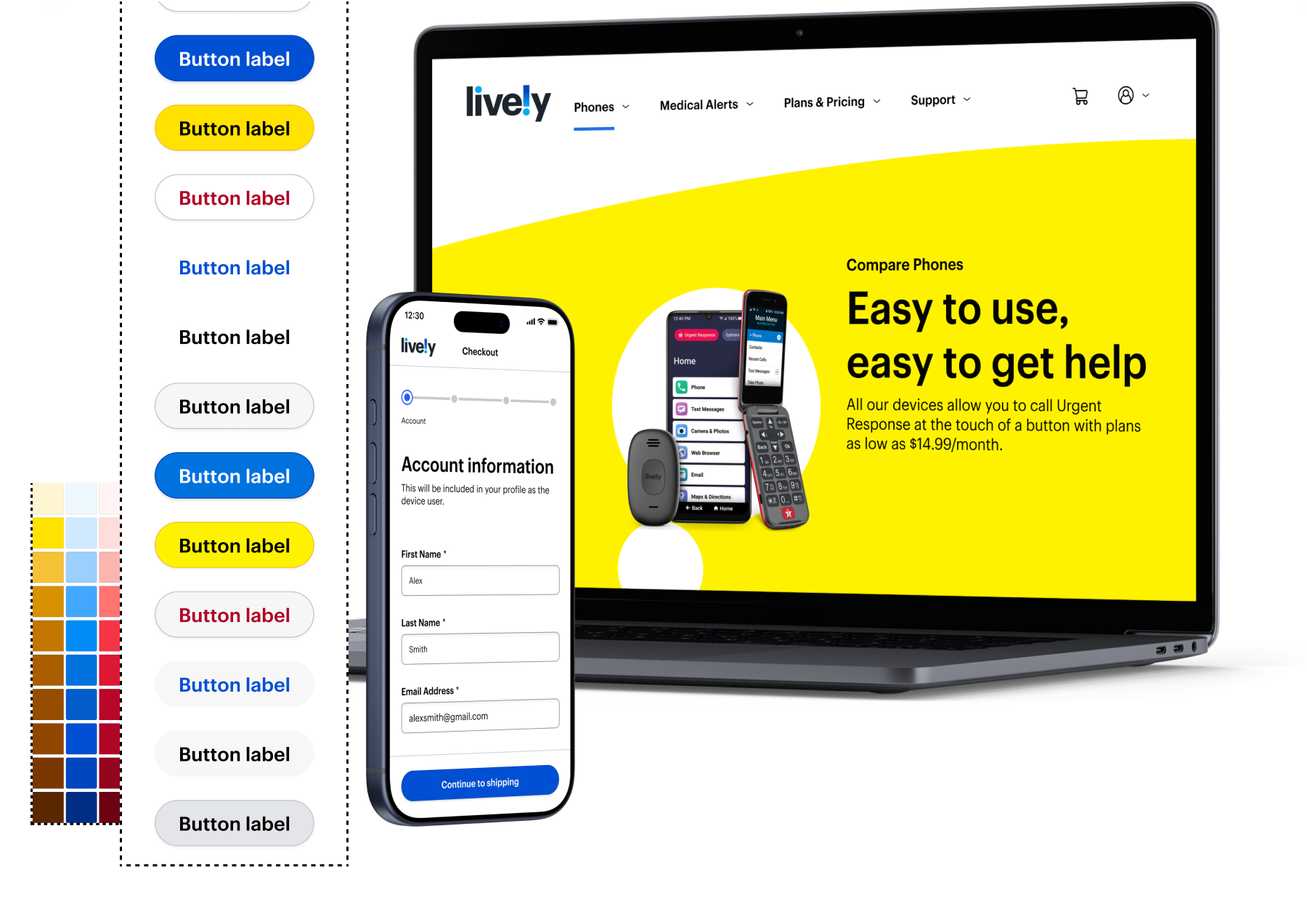
DESIGN SYSTEMS CASE STUDY
Leading Design at Scale
Project type: Design systems, Figma libraries, product design, enterprise integration
Role: Senior Experience Designer — built and scaled system strategy, libraries, & product design
Team: Partnered with Best Buy Enterprise and Health designers & engineers
Tools: Figma, Miro, Storybook, JIRA
Duration: 2021–2025
Summary
Best Buy Health needed to unify its digital experiences under one brand and scale design consistently. I led the creation and evolution of design systems — from Sunrise, a custom system built for Lively (a Best Buy Health product brand), to full adoption of BRIX, Best Buy’s enterprise design system.
The result: 100% design adoption of BRIX across the Health Web team, 80% faster development, and a foundation that leverages enterprise infrastructure for long-term scalability — delivering cohesive product design with accessibility built in at the system level to improve usability and customer confidence.
This work spanned four years over three phases
Phase One
2021-2022
Sunrise:
A bespoke system for unique needs
Phase Two
2022-2025
Build on BRIX: Aligning with our enterprise system for scale
Phase Three
2025
BRIX:
Adoption & translation of an enterprise system
Core practices across phases
Created scalable components and patterns
Grounded reusable design decisions in real product work to ensure usefulness, reflect brand and usability goals, and inform ongoing system iterations.
Guided cross-functional collaboration
Partnered with engineering and product to validate and align on shared tools, patterns, and language, scaling adoption across teams.
Maintained craft, quality, and efficiency
Documented standards and evolved responsive layout templates to keep designs consistent, accessible, and on-brand while reducing reliance on high-fidelity handoffs.
Led interaction & visual design
Delivered hands-on design across web and mobile while mentoring peers to elevate visual quality, usability, and consistency across teams.
Phase One
2021-2022
Sunrise: A bespoke system for unique needs
Lively had distinct brand and product needs that called for a standalone design system. I created the Sunrise Design System, delivering reusable foundations and components that reduced design debt and improved efficiency. The system also generated key insights that later guided Best Buy Health’s enterprise BRIX adoption.
Process example: Creating the system color palette
This snapshot highlights the creation of Sunrise’s system color palette, which solved for Lively’s unique brand needs while establishing scalable, contrast-safe color standards and ensuring accessibility was built in at the system level across product experiences.
1
Ingest brand assets
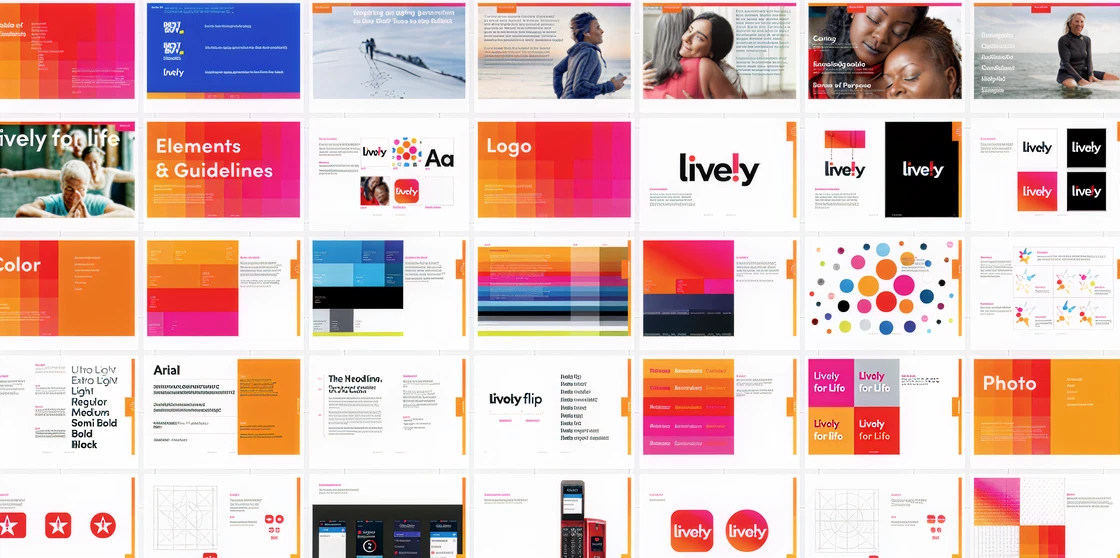
A look at the brand materials from Lively’s marketing team that served as the visual starting point.
2
Distill core colors
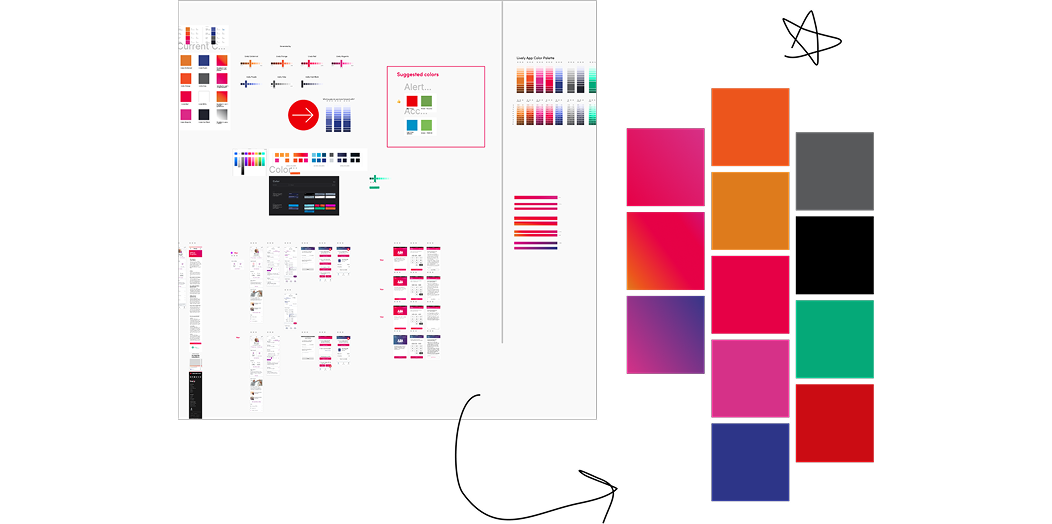
Extracted brand hues and refined tonal values to form scalable, accessible color primitives.
3
Build an accessible, scalable palette
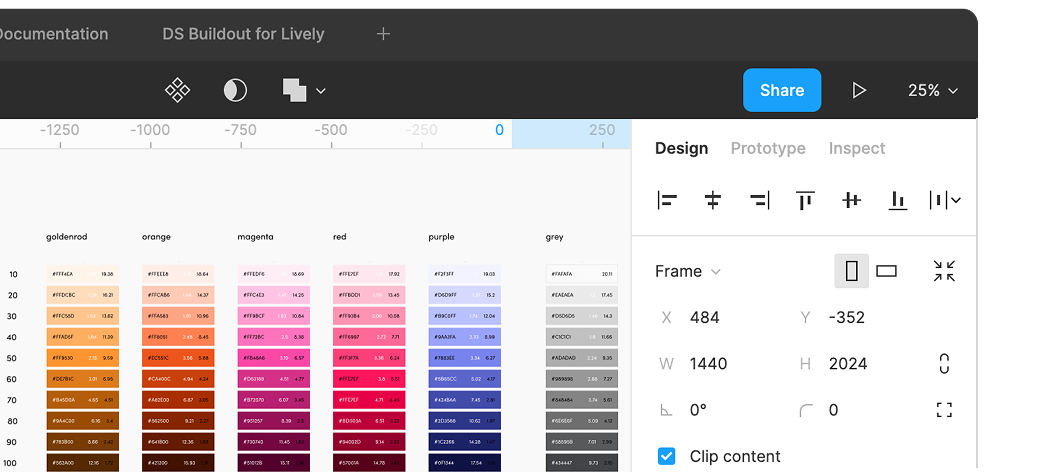
Created extended color ranges that meet accessibility standards and work across product surfaces.
4
Test and iterate in components

Applied palette to my system component and product design work validate legibility, contrast, and visual balance.
5
Document clear color guidelines
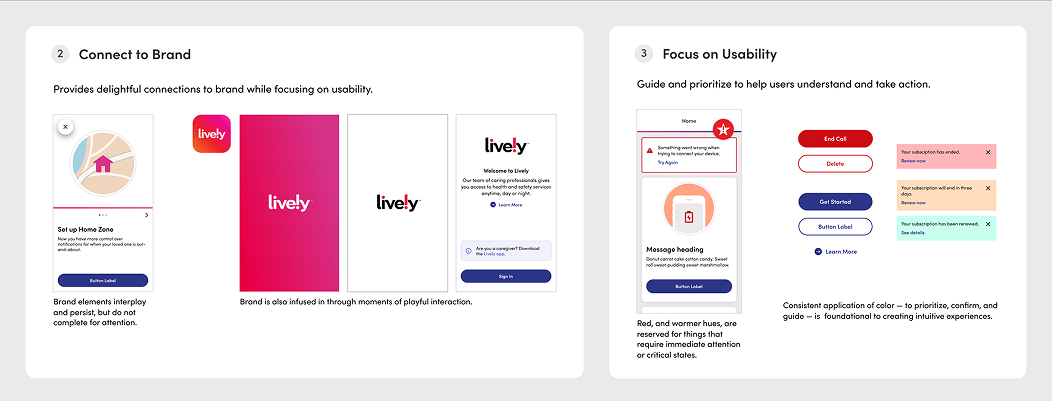
Created visual and written guidelines to promote consistent, informed color decisions.
6
Refine and scale through co-design
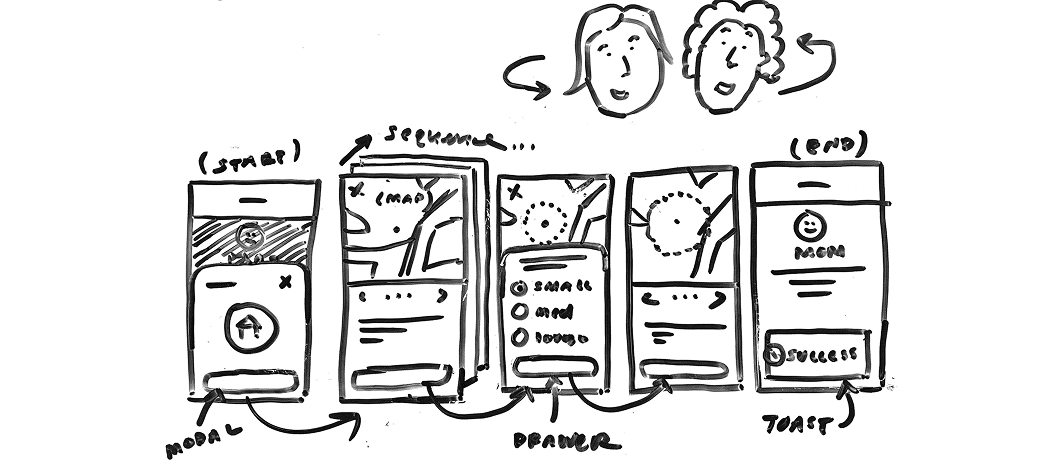
Collaborated with peers to test and iterate color usage patterns, reinforcing shared standards.
See Sunrise come to life!
I applied Sunrise foundations and components to redesign the Lively Link mobile app — where the system and product design informed each other, strengthening both consistency and craft.
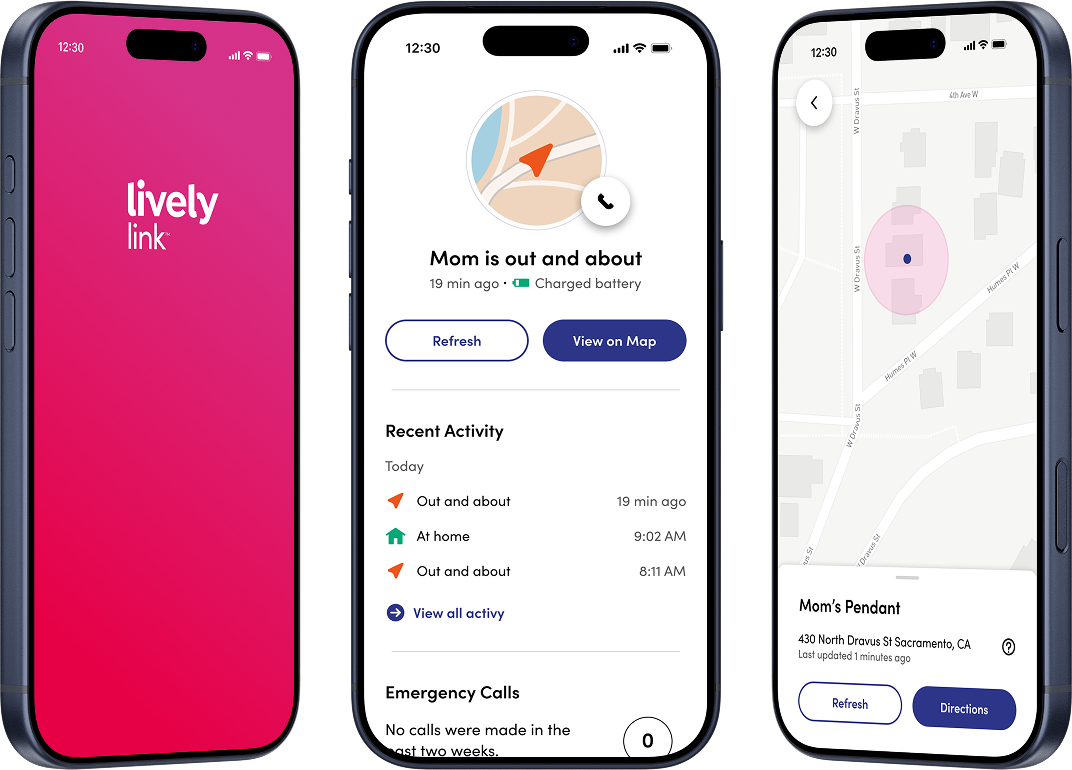
The Lively caregiver app connects with a loved one’s pendant, enabling caregivers to track location, receive notifications, and know if emergency services were contacted.
Phase Two
2021-2022
Build on BRIX: Aligning with our enterprise system for scale
When Lively rebranded under Best Buy Health, I led the transition from Sunrise to BRIX, the enterprise design system. This work expanded my systems skills—from solving for a single product suite to supporting multiple products through a shared language layer and theme. With BRIX still maturing, I created a new Figma-based bridge system that kept teams unblocked, solved for patterns across more use cases, and set us up for smoother enterprise adoption through this strategic approach.
Process: building alignment & a bridge system
I needed to build understanding and buy-in around the value of design systems while setting the stage for enterprise adoption. Knowing BRIX components would take time to ship, I balanced urgency with steadiness — educating partners, aligning workflows, and creating a bridge system that kept design momentum while we prepared for the full transition.
1
Lead cross-functional workshops

Facilitated workshops to evaluate paths for scaling design; teams aligned on using BRIX as the foundation with Health-specific extensions.
2
Map legacy to enterprise
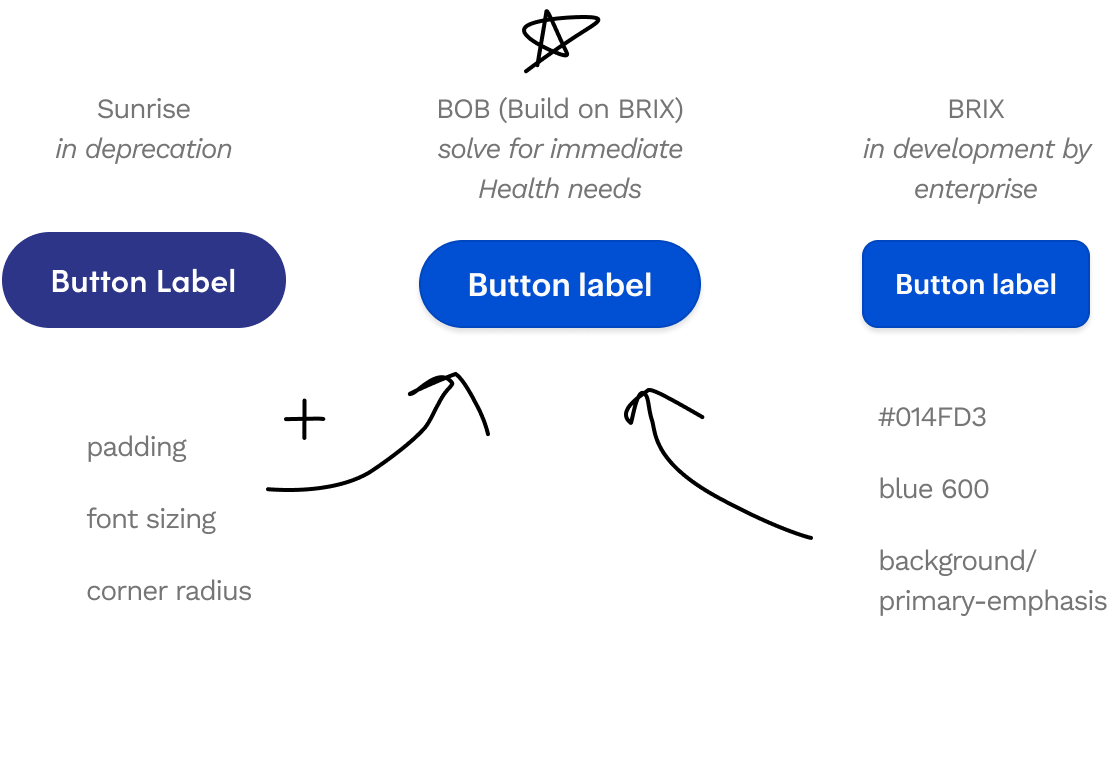
Sunrise established some core style foundations. Phase 2 brought those decisions into BRIX’s token system, creating a Health-specific expression with accessibility supported through shared system tokens.
3
Build & publish BOB (Build on BRIX) Figma library
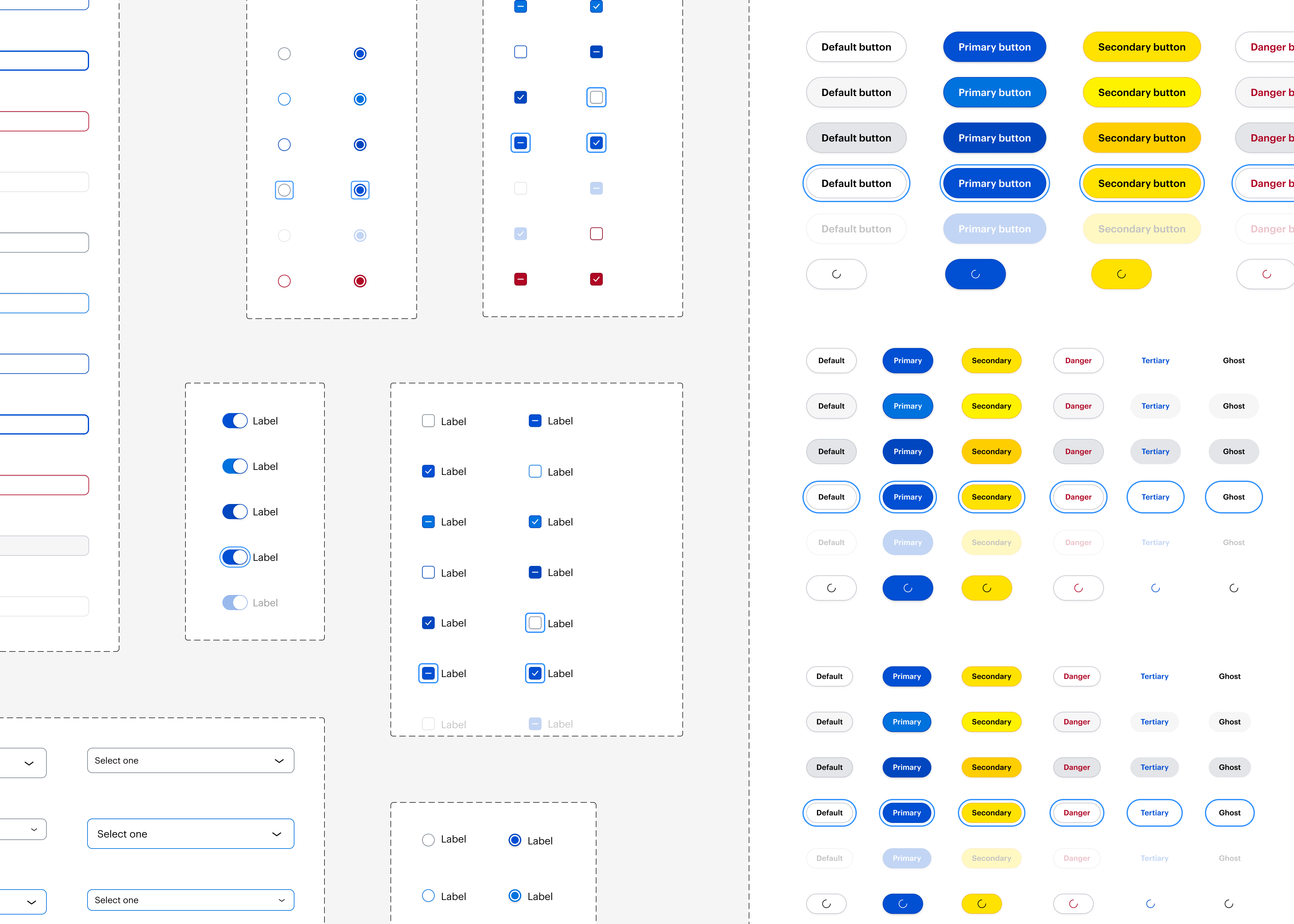
Developed and maintained the BOB Figma library used by all Health designers throughout this two-year phase — our shared source for design work until BRIX components were launched.
4
Document the Build on BRIX workflow
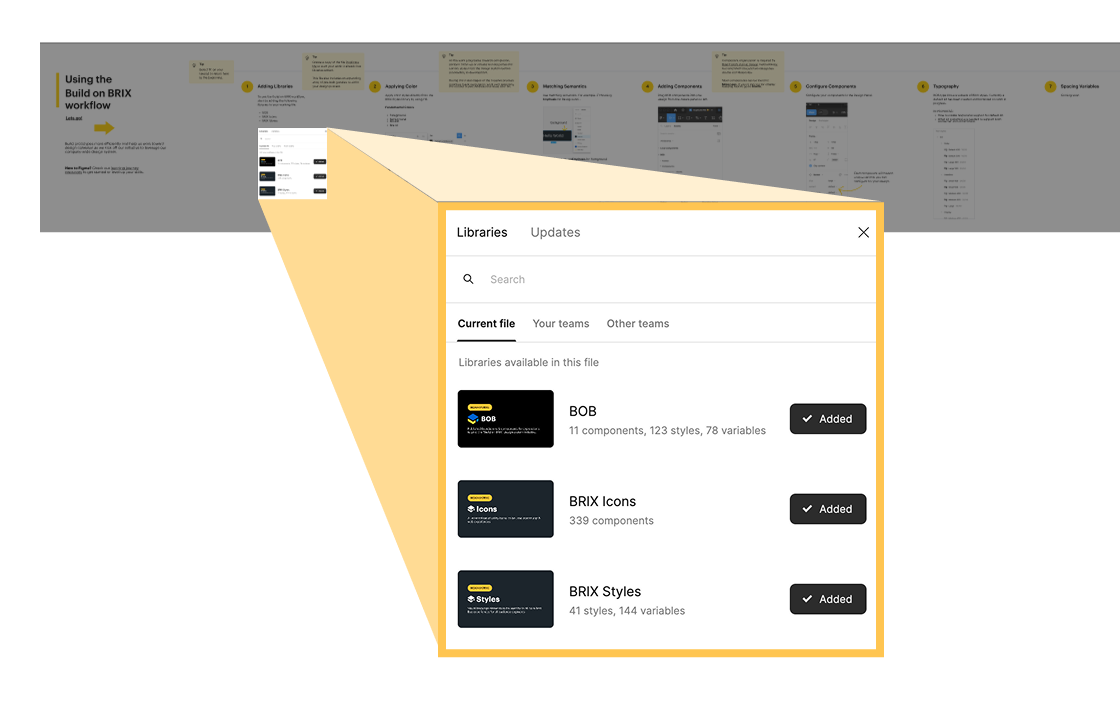
Zoomed view highlighting the library workflow section from the “How to Use BOB” guide.
Design samples using the Build on BRIX workflow
This phase spanned more than two years of iterative product design. The work remained influenced by Sunrise but evolved toward Best Buy Health’s brand by leveraging BRIX’s evolving direction and adding Health-specific overrides where needed. The bridge library and workflow strategy proved to be the ideal way to set the stage for full BRIX adoption.
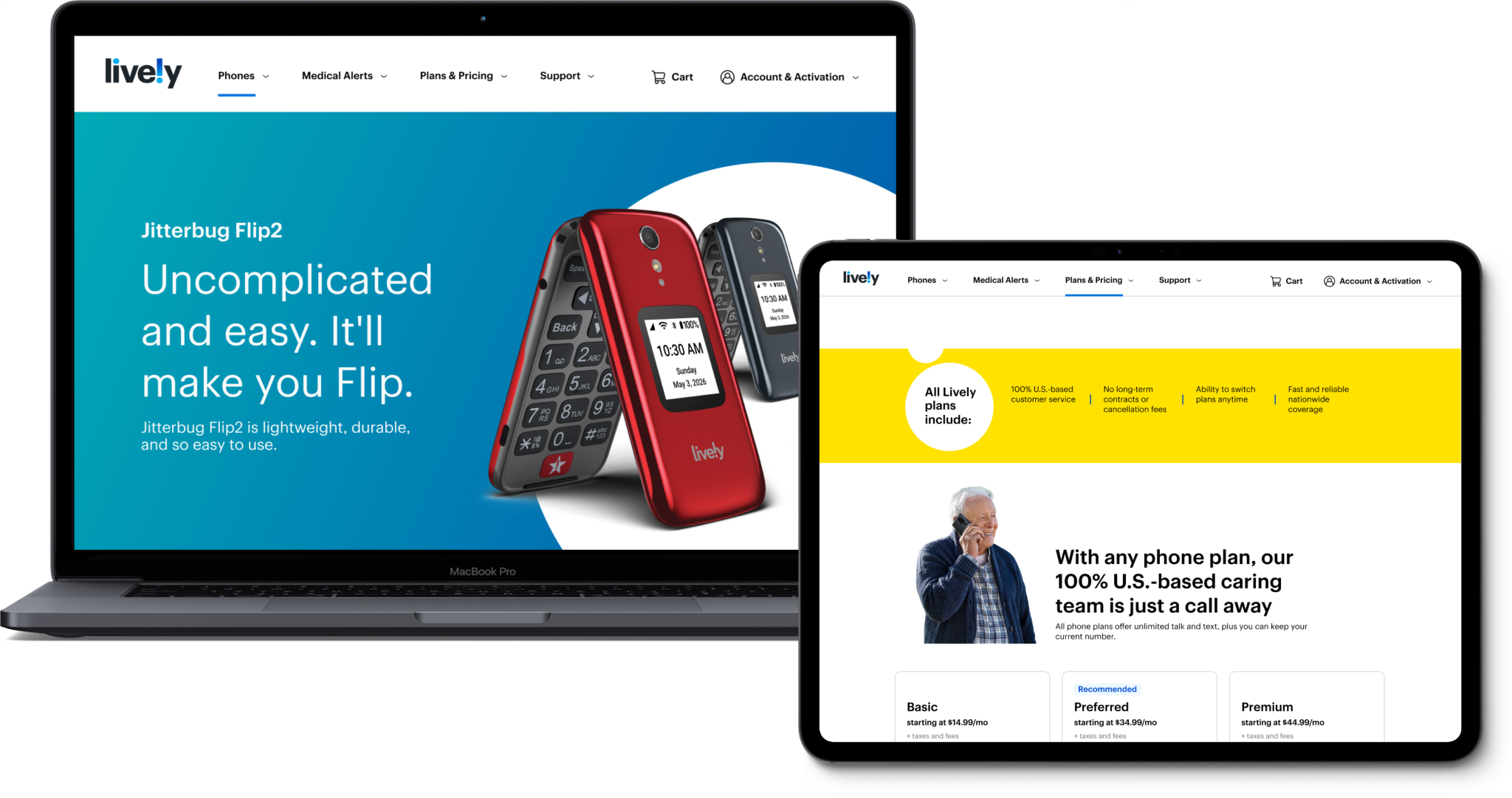
Sample designs for Lively.com browse and plan pages. Foundations and components were translated to support a range of needs from core design elements to more visually expressive, marketing-driven parts of the site.
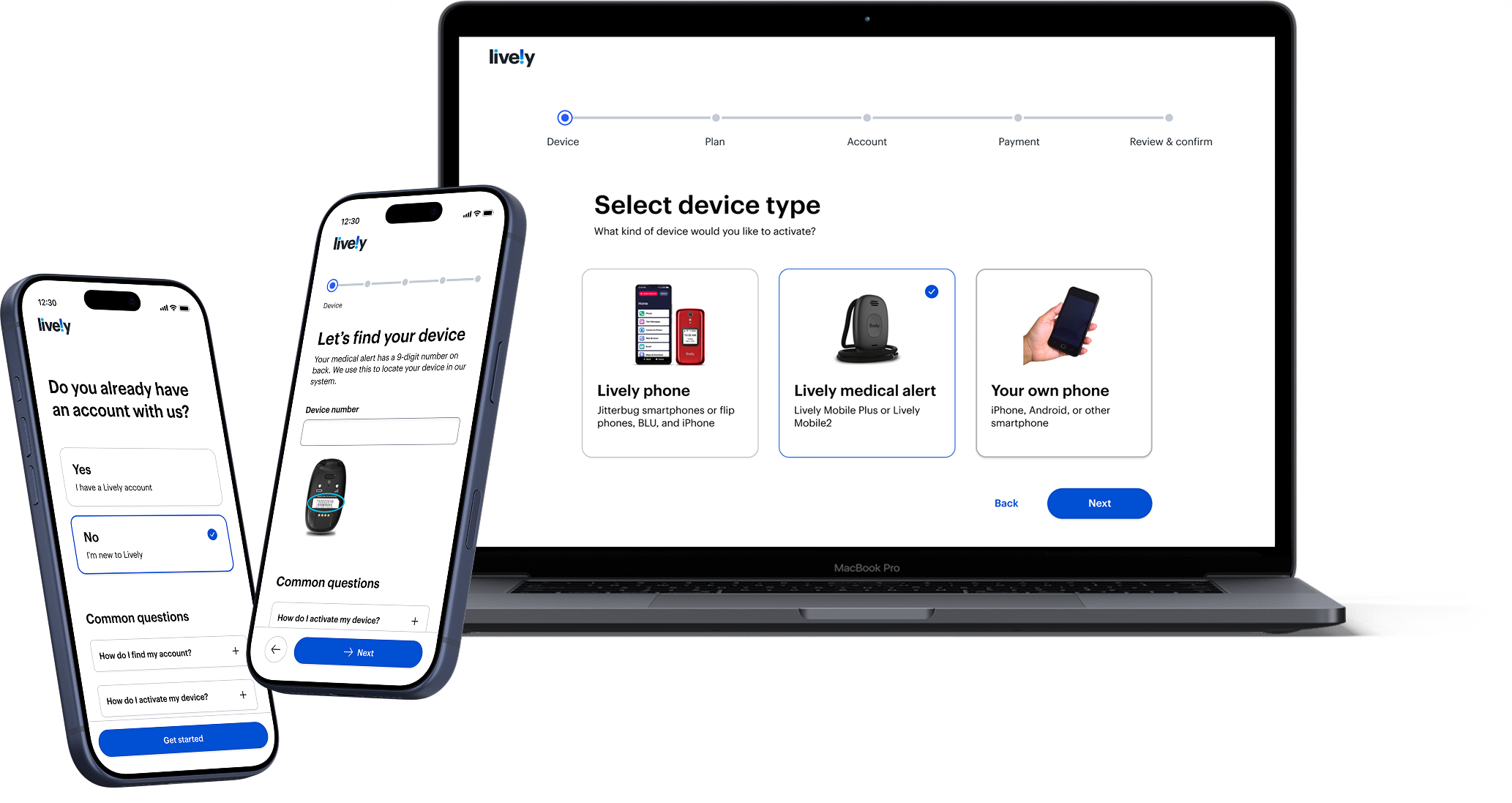
Sample designs for more focused user tasks — in this case, device activation.
Phase Three
2022-2025
BRIX: Adoption & Translation
As BRIX matured, I led its first applications within Best Buy Health — partnering with enterprise designers, engineers, and product leads to validate the system in real product contexts. I established application-level libraries that extended BRIX for Health’s unique needs while keeping experiences consistent across products.
Process: Piloting and translating the enterprise system
To ensure the pilot’s success, I partnered closely with enterprise and Health teams to inform BRIX foundations, integrate them into our product-level libraries, and design end-to-end experiences using the new system. Ongoing refinement allowed us to evolve patterns and components alongside a fast-moving roadmap.
1
Define the BRIX pilot
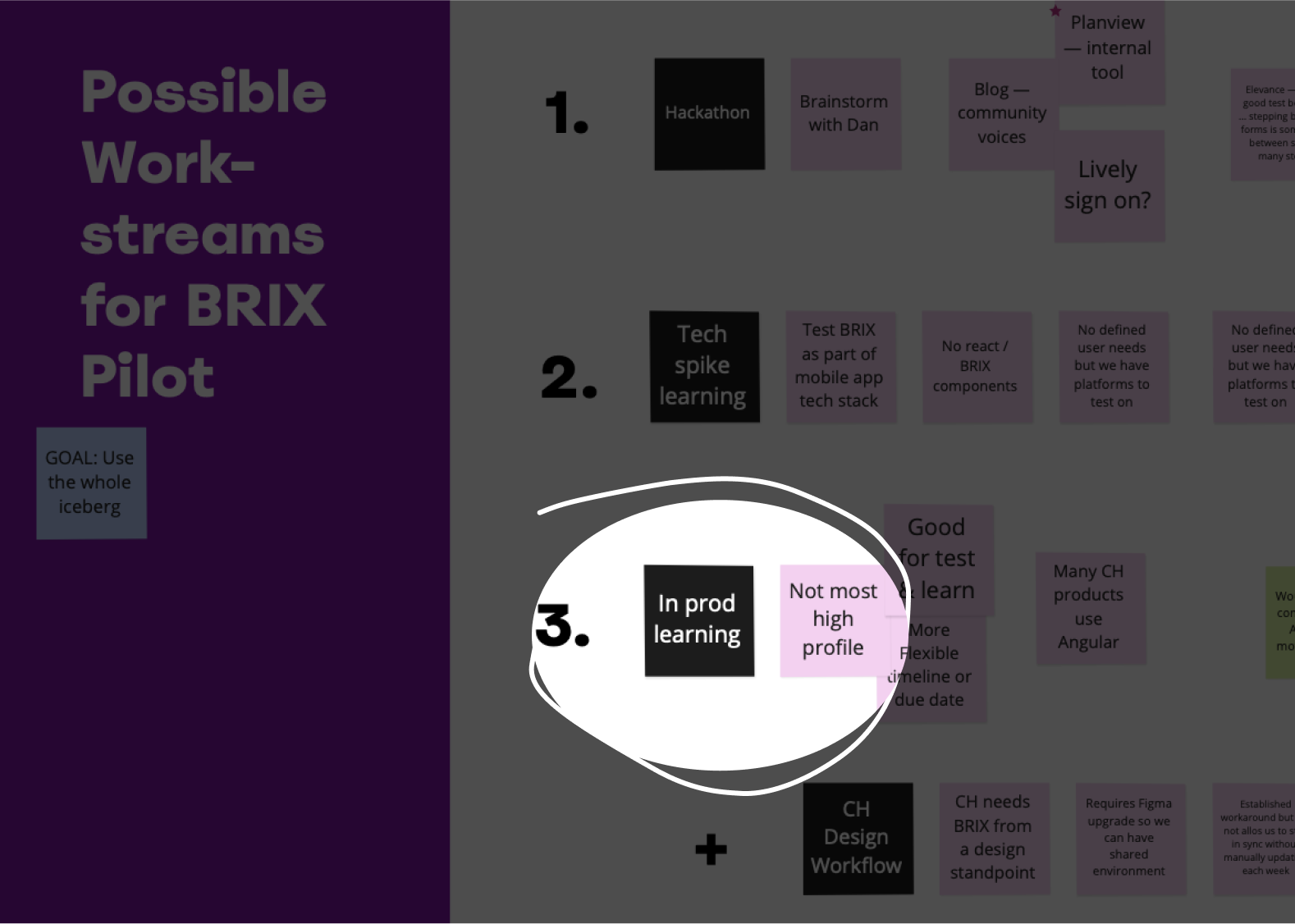

Led a cross-functional Miro workshop to evaluate options, surface risks, and agree on a pilot that would validate BRIX’s limits and outline integration needs.
2
Refine and extend product libraries

Showcases ongoing design and maintenance work for Health libraries built on BRIX — identifying gaps, informing the roadmap, and supporting needs BRIX hadn’t yet solved.
3
Evolve layout templates
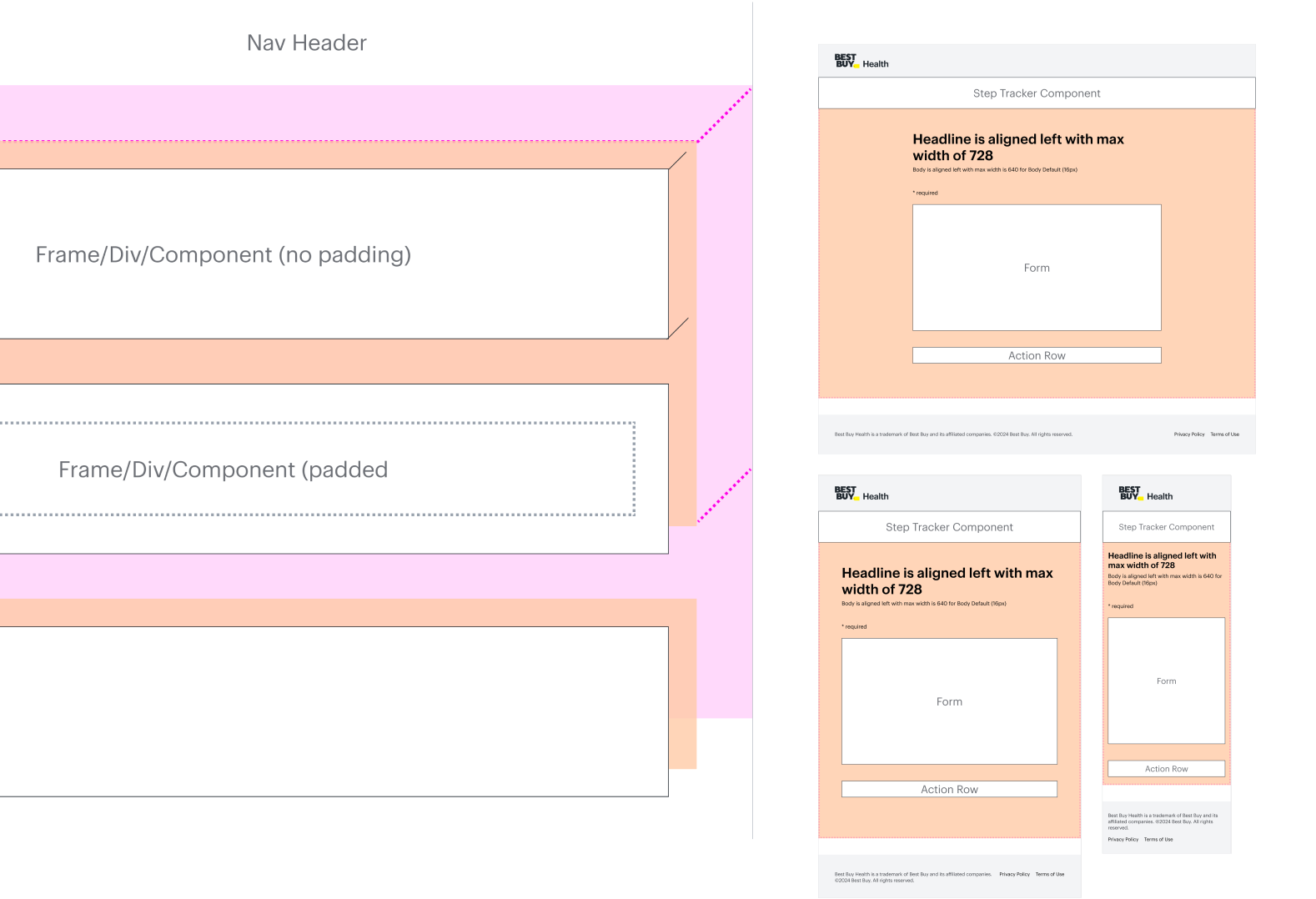
Defined spacing and responsive layout rules so engineers could build confidently without relying on high-fidelity handoffs.
4
Document experience standards
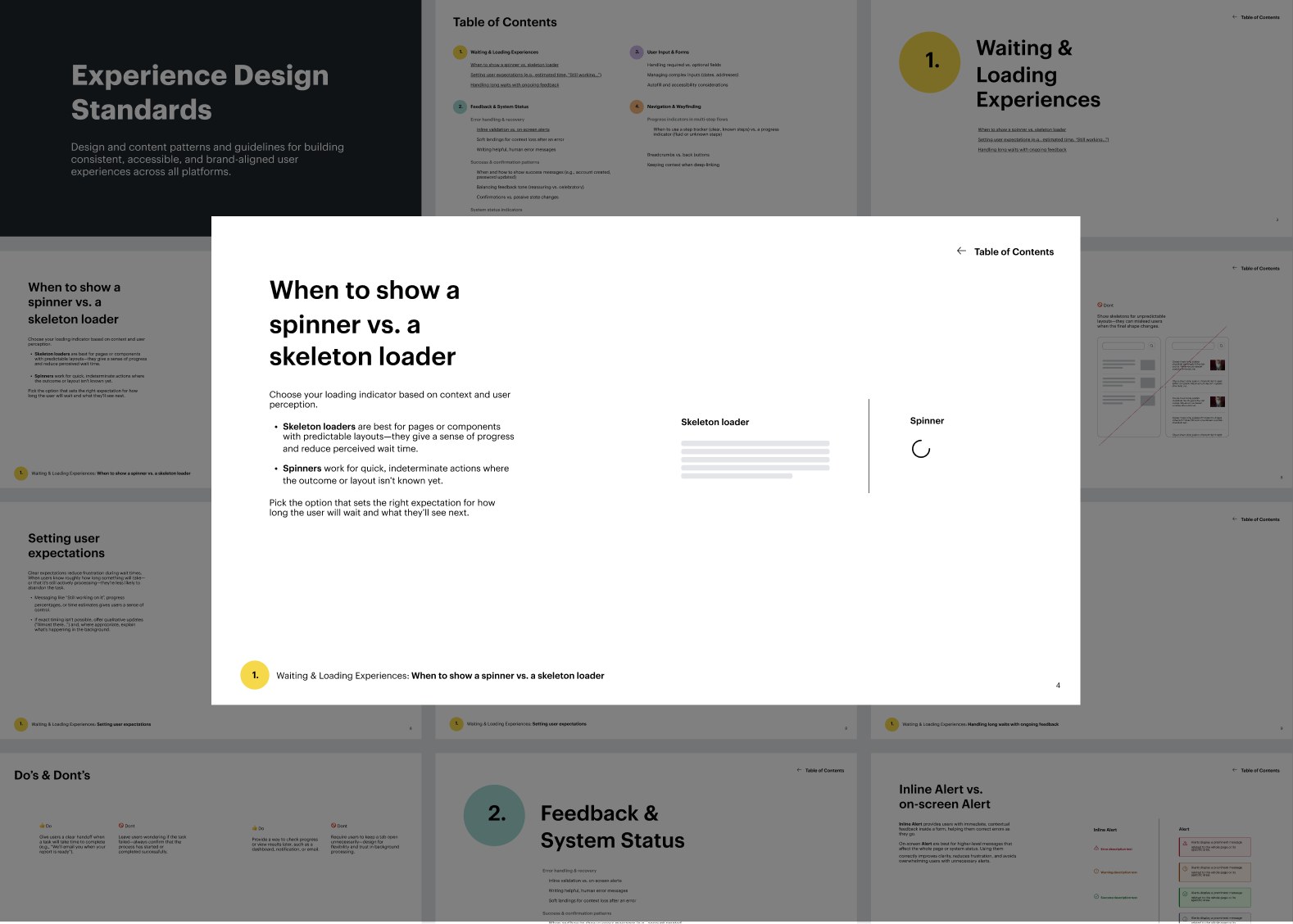
Partnered with UX peers to align on best-practice patterns and document shared standards that scale across products.
See BRIX in pilot!
The interim Phase 2 workflow I created made it easy to swap designs to BRIX components as they shipped—allowing engineers to pilot the system early and accelerating full adoption.

Screens from the Lively shopping journey, from plan selection through checkout. The mini cart (center) served as the actual BRIX pilot, validating design and code integration and paving the way to scale BRIX components across checkout and later other Livey and Best Buy Health experiences.
Results
Pilot Success!
The pilot proved scalability across Health, uniting teams around shared tools, language, and infrastructure, setting the stage for full system adoption.
100%
adoption by Health Web team
All Best Buy Health web designers and engineers now design with BRIX foundations and product-level libraries, creating consistent, themeable customer experiences.
Accessibility
Built In
Shared foundations and components provided contrast-safe patterns that reduced issues and sped up accessibility testing, while still requiring product-level review.
80%
faster development
Shared libraries and semantic language streamlined design-to-launch, cutting rebuilds and speeding delivery across products.
Thanks for taking a peek at my case study!
I’m currently building out additional case studies focused on checkout conversion for e-commerce and UX strategy for multi-product experiences.
Feel free to reach out if you want to chat about UX, design systems, or just to say hello!